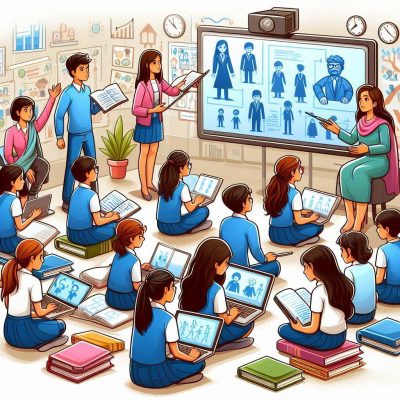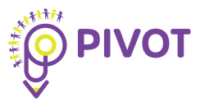
European Primary School Teachers’ Perspectives on High-Leverage Practices and Wordless Texts in Inclusive Classrooms: Findings from Work Package 2
Introduction:
Our second blog describes the key findings of Work Package (WP) 2: Theoretical Development and Needs Analysis. WP2 purported to develop the PIVOT’s theoretical framework by (a) conducting a literature review on high-leverage practices (HLPs) and wordless texts for students with diverse learning needs in inclusive classrooms and; (b) assessing via an online anonymous survey questionnaire teachers’ views and experiences across four European countries in utilizing both practices in their day-to-day classroom instruction.
PIVOT’s Theoretical Framework Concepts
1. High-Leverage Teaching Practices in Inclusive Classrooms
Teaching students with diverse learning needs (SDLN) in general education classrooms requires orchestrating pedagogical tools and instructional strategies that promote active student engagement, peer collaboration, and successful learning. McLeskey and colleagues (2018; 2022) conducted a three-year research investigation -as part of the Council for Exceptional Children’s appointment- reaching out to hundreds of teachers, administrators, educational stakeholders, teacher educators, and researchers to document the most essential practices teachers from pre-service through in-service level should acquire and implement for supporting all students. Their investigation concluded with a list of 22 effective practices (aka high-leverage practices [HLPs]) categorised into four teaching areas: collaboration, assessment, social/emotional/behavioural strategies, and instruction. All 22 HLPs had a strong empirical basis for improving student academic and behavioral outcomes and were selected based on their significance and applicability to teachers’ daily work.
In the PIVOT project, we focused only on the instruction area and we assessed European primary school teachers’ perspectives across 11 HLPs documented in this domain: (1) Prioritizing long- and short-term goals by linking those to previous learning and current performance. (2) A well-designed systematic instruction is delivered to make connections and meet a specific learning goal. (3) Providing curriculum task adaptations and modified materials during instructional activities to better meet students’ needs and enable their success. (4) Incorporating strategy instruction across subjects by teaching explicitly cognitive and metacognitive strategies for improving and generalizing student independent learning. (5) Ensuring that scaffolded supports are readily available to allow students to complete tasks successfully during instruction. (6) Delivery of explicit instruction entails modeling, guided practice, and many opportunities for independent practice in pairs or individually. (7) Adopting flexible grouping to meet student needs. Mixed-ability and same-ability groupings are selected at different times as determined by student skills, interests, and prior knowledge. (8) During whole- or small-group instruction, inclusive teachers implement strategies for active student engagement (e.g., choral responding, peer tutoring, response cards). (9) Incorporating different types of instructional technology, from low to high-tech solutions (e.g., assistive technology, content-specific technology). (10) For students with intensive learning needs, classroom teachers participate in a team-based process for individualizing students’ chronic behavioral and academic needs. (11) Incorporating generalization and maintenance strategies in their lessons so that students can use taught skills across subjects and places and maintain them over time.
2. Wordless Texts
Wordless texts are visual narratives found in books, videos, and theatre plays that describe a sequence of story events through fixed or moving illustrations, which do not include any words (Arizpe, 2013). Dowhower (1997) states wordless texts have been a narrative genre since 1960. However, Hayes (2014) notes that the first wordless children picturebook was presented much earlier, in 1932, and the book was “What Whiskers did” by Ruth Carroll. The book dominated children’s literature as it was the only wordless book for three decades. With the flourishment of the Science of Cognitive Psychology (Sperling, 1960), wordless texts were given greater attention as the emphasis was to improve school readiness and cognitive skills (e.g., Ekpe et al., 2005; Jalongo et al., 2002).
Several systematic reviews have been conducted about the empirical basis of wordless texts for students without diverse learning needs (e.g., Arizpe, 2021), denoting the educational utility of wordless texts as a learning tool and its positive impact on student learning. Wordless texts address all people equally independent of age or experience; hence, children and adults alike might get enthusiastic about them. Classroom teachers may use wordless texts to develop student oral language, reading comprehension, drama, visual literacy, etc.
In the PIVOT project, we aim to assess the impact of wordless texts (i.e., videos) on the oral language and active participation of SDLN. Few studies have been conducted so far addressing SDLN. For instance, D’ Angelo (1981) suggests that wordless picturebooks are promising for improving oral language narrative (e.g., sequence and prediction) skills for students with communication difficulties and positive attitudes toward story activities. Arizpe (2014) urges the research investigation of wordless texts for students who are second language learners, present diverse linguistic and cognitive abilities, and/or come from diverse cultural backgrounds.
Before examining the impact of wordless texts and HLPs on primary school students’ language skills, we moved to assess teachers’ knowledge, views, and perspectives on both teaching areas. Conducting a needs-assessment analysis allowed us to develop a PIVOT academic intervention program tailored to the daily needs of classroom teachers.
Exploring Teachers' Perspectives across Austria, Cyprus, Greece, and Romania
PIVOT’s theoretical framework is based on HLPs and wordless texts. The research consortium assessed primary school teachers’ perspectives on both instructional areas via an anonymous survey questionnaire. Specifically, the survey aimed to examine how primary school teachers in Austria, Cyprus, Greece and Romania support SDLN (e.g., students with disabilities, students with culturally and linguistically diverse backgrounds, and students from low socioeconomic backgrounds in their classrooms) during instruction. The survey serves as a needs-assessment tool for documenting current teacher views and experiences on the extent to which they implement HLPs and wordless texts (i.e. picturebooks, silent videos, wordless story cards) with diverse learners in inclusive classrooms.
The survey tool consisted of four main parts:
● Part I examined teachers’ views on the importance and frequency of using HLPs with SDLN in their instruction.
● Part II examined how teachers used wordless texts in their instruction.
● Part III examined teacher views on using wordless texts to teach SDLN in inclusive classrooms.
● Part IV collected data on the extent to which teachers felt they needed training in using wordless texts in their instruction and how important they found this training to be.
Cross-country results
A total of 260 primary school teachers from all four countries participated in the survey (Austria = 36, Cyprus = 88, Greece = 38, Romania = 98). Below is a summary of key findings for each part of the survey.
Part I: Importance and Frequency of HLPs Use
Results showed that, on average, European teachers considered important or very important (mean range: 4.21-4.70) the 11 HLPs and reported using them sometimes or very often in their instruction (mean range: 3.87-4.19). Further, some strategies (e.g., explicit instructional approaches, strategies for promoting active student engagement, assistive and instructional technologies and instructional approaches across time and school settings) were reported to be used rarely or sometimes by Austrian teachers (M=2.92-3.78). On a similar note, teachers in Cyprus reported sometimes conducting generalization and maintenance instruction (M=3.73).
Part II: Frequency and Types of Use of Wordless Texts
Results showed that primary school teachers across Europe do not use wordless texts systematically. For instance, teachers in Romania reported using wordless texts (M=80.6) more consistently compared to teachers in Austria (M=75.0), Cyprus (M=70.5), and Greece (M=57.9). Given European teachers’ lack of consistent use, our PIVOT project addresses the need to increase the consistent use of wordless texts in European classrooms. When specifically asked about the type of wordless texts that they used, teachers reported using the following types: wordless picturebooks (reported as being used by 56.9% of the participating teachers), wordless story cards (reported as being used by 43.5% of the participating teachers) and silent videos (reported as being used by 39.6% of the participating teachers). Thus, wordless videos are the least widely used type among classroom teachers in Europe. PIVOT project could address the need to expand the use of wordless video in daily classroom practices.
Part III: Integrating Wordless Texts in Classroom Instruction
When primary school teachers were asked about the benefits of incorporating wordless texts in their daily instruction, they reported to a small or moderate extent the benefits across various tasks. For instance, Austrian teachers reported, on average, that they believed, to a moderate extent, that using wordless texts would improve SDLN’s language skills (M=3.33). Still, they considered, to a moderate extent, its integration with other teaching practices (M=3.31). Cypriot teachers reported, to a large extent, that integrating wordless texts in their instruction would improve SDLN’s active engagement (M=4.03), and they could be combined with other practices (M=4.23). Conversely, teachers in Romania and Greece reported that integrating wordless texts in their instruction would improve SDLN’s active engagement to a small extent (Romania: M=3.66, Greece: M=3.78) and that they could be combined with other practices to a small extent (Romania: M=3.73, Greece: M=3.89).
Part IV: Teacher Training Needs on Wordless Texts and HLPs Use
The last part of the survey assessed teachers’ perspectives on receiving training for integrating wordless texts and HLPs in their instruction and the importance of this training. Results showed that teachers in Greece (M=4.11-4.21) and Cyprus (M=4.09-4.15) expressed, to a large extent, an interest in receiving professional development on HLPs and wordless texts. Conversely, teachers in Austria (M=3.3-3.56) and Romania (M=3.79-4.11) expressed such an interest to a moderate extent.
When asked about their motivation to participate in the PIVOT project, on average, European teachers considered it important to become involved due: (a) to their desire to learn how to include SDLN effectively (Austria: M=4.17, Cyprus: M=4.48, Greece: M=4.53, Romania: M=4.10); (b) to designing activities to meet those student needs (Austria: M=4.25, Cyprus: M=4.58, Greece: M=4.55, Romania: M=4.24); and (c) to emphasizing a student-centered approach (Austria: M=4.14, Cyprus: M=4.48, Greece: M=4.37, Romania: M=4.28);
Conclusion
Based on the needs-assessment survey results, it is evident that wordless texts are not widely and systematically used in European classrooms across Austria, Cyprus, Greece, and Romania. Interestingly enough, primary school teachers expressed an interest in receiving targeted professional development training in both HLPs and wordless texts to meet their diverse students’ needs more effectively and efficiently in general education classrooms. To this extent, the PIVOT academic intervention program purports to address teacher professional development needs in building more inclusive classrooms using HLPs and wordless texts.
References
Arizpe, E. (2013). Meaning-making from wordless (or nearly wordless) picturebooks: what educational research expects and what readers have to say. Cambridge Journal of Education, 43(2), 163-176. https://doi.org/10.1080/0305764X.2013.767879
Arizpe, E. (2014). Wordless picturebooks: Critical and educational perspectives on meaning-
making. In B. Kümmerling-Meibauer (Ed.), Picturebooks: Representation and Narration, (pp. 91–108). Routledge.
Bosch, E. (2014). Texts and Peritexts in Wordless and Almost Wordless Picturebooks. In B. Kümmerling-Meibauer (Eds), Picturebooks: Representation and narration (pp. 71-90). Routledge.
D’Angelo, K. (1981). Wordless picture books and the young language-disabled child. Teaching Exceptional Children, 14(1), 34-37.
Dowhower, S. (1997). Wordless books: Promise and possibilities: A genre come of age. In K. Cambell, B.L. Hayes and R. Telfer Promises, Progress and Possibilities: Perspectives of Literary Education, (pp. 57-79).
McLeskey, J., Billingsley, B., and Ziegler, D. 2018. “Using High-Leverage Practices in Teacher Preparation to Reduce the Research-to-Practice Gap in Inclusive Settings.” Australasian Journal of Special and Inclusive Education, 42(1), 3–16. doi:10.1017/jsi.2018.3
McLeskey, J., Maheady, L., Billingsley, B., Brownell, M.T., & Lewis, T.L. (2022). High leverage practices for inclusive classrooms (2nd ed.) Routledge.
